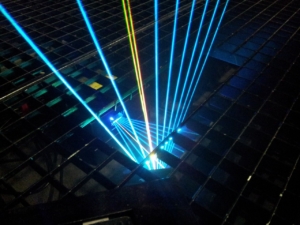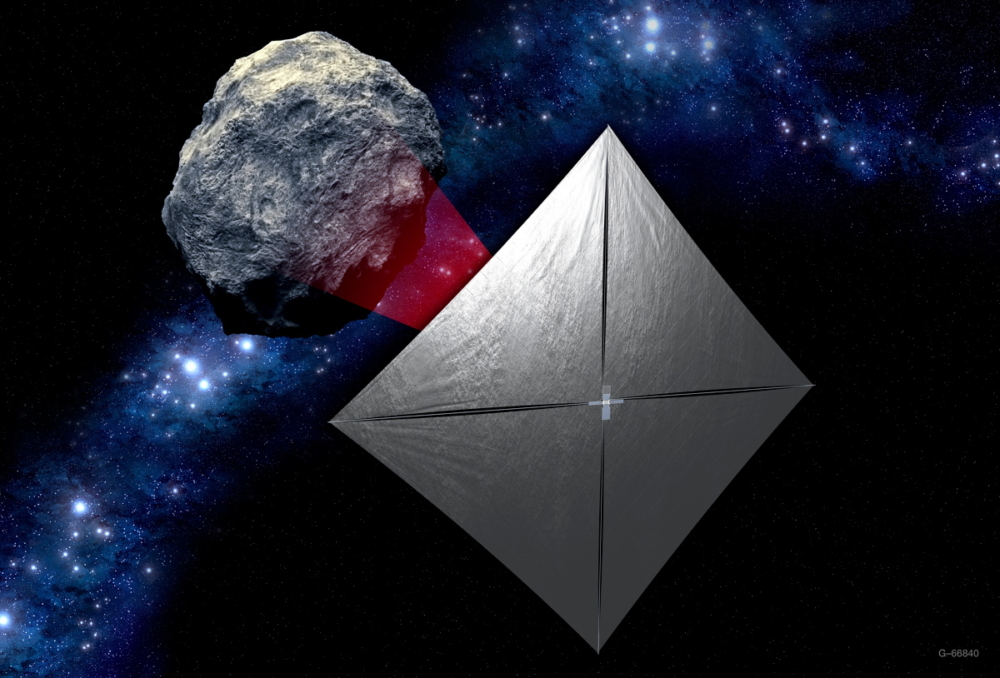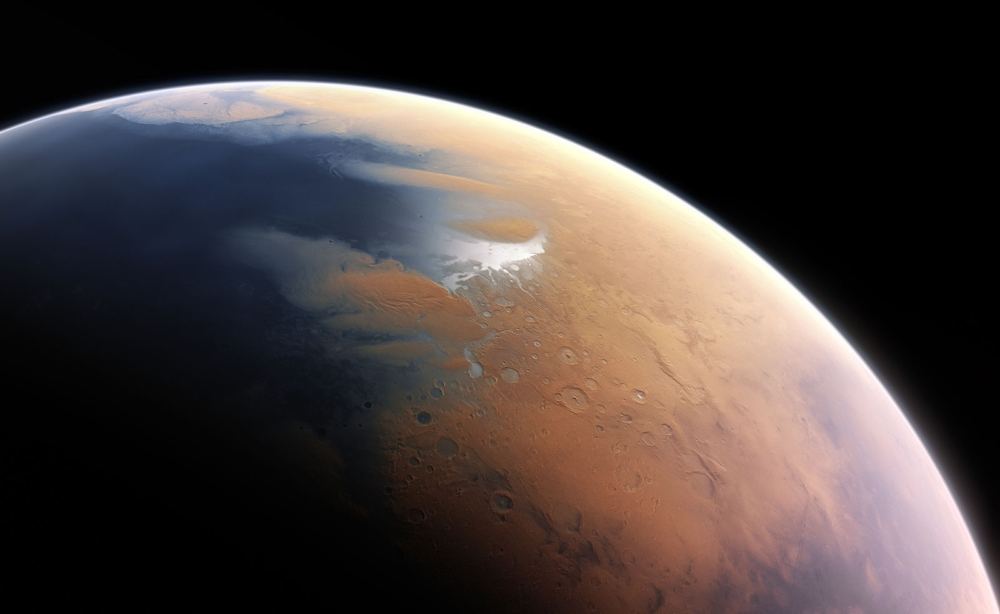[ot-caption title=”A 3D model of a solar sail that would be quite similar to the Starshot nanocraft. (via Wikimedia/NASA)”]
Alpha Centauri is the nearest star to the Sun found within the Milky Way Galaxy. However, even this celestial neighbor finds itself situated 4.4 light years (or about 26 trillion miles) away, which with the present speed of our most distant satellite would take over 400,000 years to arrive there. In a project that sounds akin to science fiction, world-renown physicist Stephen Hawking and billionaire Yuri Milner want to create a small craft that could reach Alpha Centauri in only 20 years time!
While the project, dubbed Starshot, has yet to even prove the concept of their idea, Milner is betting on the belief that Hawking and the world space exploration industry could construct a lightweight, large-surfaced craft that would use the propulsion of concentrated lasers on earth to send the ship sailing through space at a fraction of the speed of light, anticipated to be 134 million miles per hour. As a billionaire from Russia, Milner put up $100 million of his own wealth to begin funding the project, but government-level spending is expected to be necessary to truly make this mission possible. The goal of the current Breakthrough Initiatives is to provide evidence for the feasibility of the project and attract greater funding. With a mind like Hawking and Facebook CEO Mark Zuckerberg aboard, it would seem that this long shot has a hefty backing that should bring Starshot to reality.

Engineering feats will have to be accomplished in order to bring this space sailboat to fruition. The concept involves a lightweight sail that is attached to a very small vehicle. This can be propelled forward by an array of lasers placed in close proximity on earth that will then fire toward the sail. Difficulties arise not only in just the production of the craft itself, but also in creating the array of lasers and a larger ship that can orbit and bring these “nanocrafts” into orbit. The vision of Milner and Hawking is the deployment of a multitude of these vehicles that can then explore space much more rapidly than humans or standard man-made satellites ever could. As it stands, Voyager 1 is the farthest satellite from Earth and has been travelling since 1977 only to reach less than one thousandth of one perfect of the distance to Alpha Centauri.
Ultimately, the project will not be fully realized for years to come, even if all the scientific and engineering requisites are met. More importantly, recent initiatives like Breakthrough and the private sector introduction into space travel with companies like SpaceX and Virgin Galactic have sparked greater interest in human progress toward pioneering the final frontier of outer space, especially following the termination of the space shuttle program in 2011. Starshot gives hope and offers a glimpse into what may be the future of celestial exploration and inspire a new generation of astronauts and cosmic hopefuls.
Sources: The Verge, Breakthrough, Planetary Society Photo Source: Wikimedia Commons
































![Stranger Things 4: What to Expect [Warning: Contains Spoilers]](https://pcpawprint.com/wp-content/uploads/2021/11/StrangerThings4-900x473.jpeg)


































































